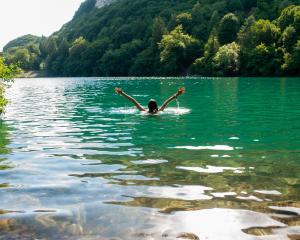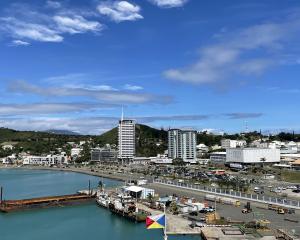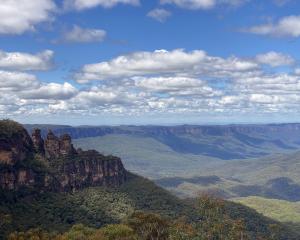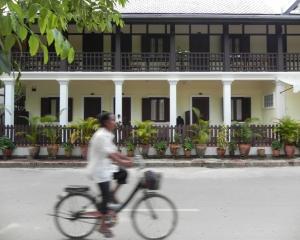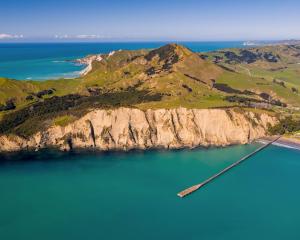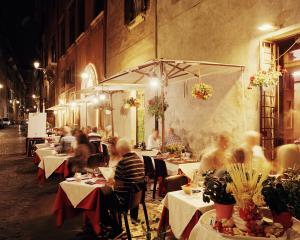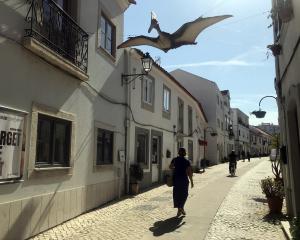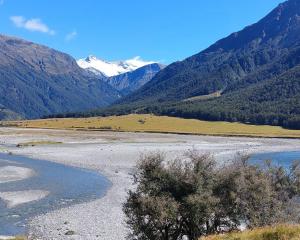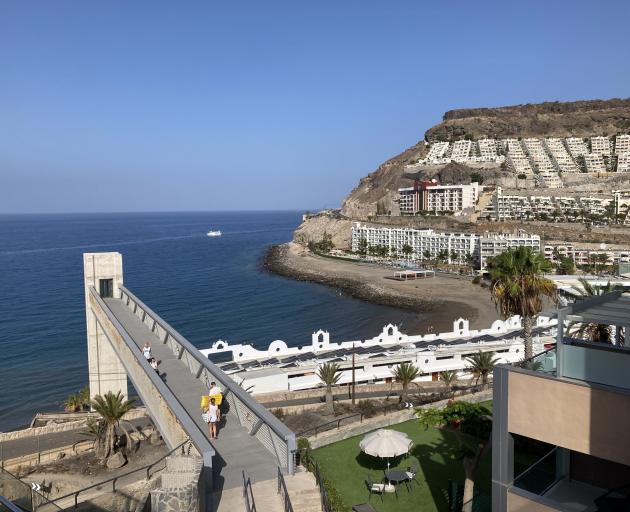
When I was a kid, my Nana had a cute little chirping yellow canary, the highlight for me of any family visit to her home.
"They originally came from the Canary Islands," my Dad told me, "islands in the Atlantic Ocean, off the west coast of Africa".
It sounded so exotic to a kid growing up in New Zealand. In my eyes, my parents were Africa experts, having spent eight years living in Nigeria. I imagined the Canary Islands to be a lush, tropical paradise, swarming with little yellow birds, and I vowed to go there some day.
It is funny what sticks with you from your childhood. Decades have passed, but there we were in July 2023, sitting in London, with a spare week between jobs, on my laptop, choosing an "EasyJet last-minute holiday" — the cheap ones, discounted as the airline wants to fill its flights at the last minute. The Canary Islands looked like a great option. I consulted with the boss. Wife Yuriko, who grew up in Japan, also knew that canary birds came from the Canary Islands and was intrigued. She was keen to go too.
Setting the scene
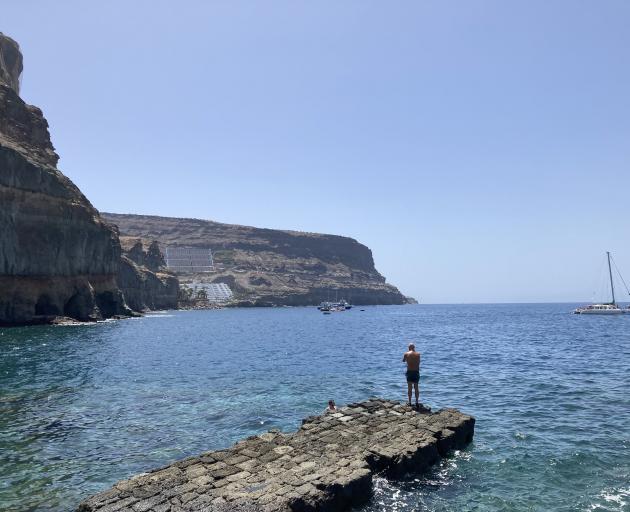
I had thought that Gran Canaria was probably somewhere around the equator’, but it turns out that it is at latitude 28° north, in Kiwi-speak, the same latitude that Surfer’s Paradise, in Queensland, is south of the equator. I had imagined a small, lush tropical island, but it turns out that Gran Canaria is about the same size as O’ahu in Hawaii, with a similar population, 850,000 to O’ahu’s one million. And it isn’t lush. Gran Canaria has a dry, wind-blown, brown volcanic landscape. The main city, Las Palmas de Gran Canaria is in the north, while most of the resort areas are on the south coast.
If you’re wondering as to the kind of deals you can get on an "EasyJet last-minute holiday", we ended up paying £600 each (about NZ$1300 each) for return flights, check-in bags, (usually extra on EasyJet), return hotel transfers, seven nights at the Riviera Vista hotel in the tiny resort of Playa del Cura on Gran Canaria’s southwest coast, and an excellent buffet breakfast and dinner daily. It was the week before UK school holidays kicked off and was the cheapest such trip available when we booked, a week before departure.
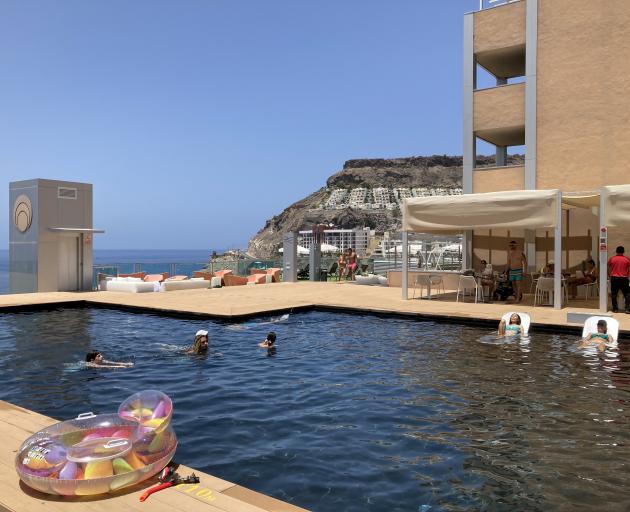
A masterstroke
Who would have thought that buying the cheapest tour would have been a masterstroke? Me, actually. As I suspected, it turned out that nobody else on our full flight from London had decided to stay in Playa del Cura. It was just too off the beaten track for most English holidaymakers. The bus doing EasyJet holidays hotel transfers off our flight made seven stops on the way to dropping the two of us off last, at the end of the line. The other seven drop-offs were around Playa del Ingles, "the English beach".
I knew about "fish ’n’ chip" towns from years of working on Greek Island guidebooks for Lonely Planet — towns that specialise in catering to the English on holiday, with restaurants serving a "full English breakfast" and English-style pubs serving fish ’n’ chips and English beer, while showing Premier League football on big screens. Kind of like being in England, but somewhere with a lovely beach and nice warm weather. According to my buddy on Kos, in the Greek Islands, these English visitors seldom leave their comfort zone to head out of their fish ’n’ chip" towns to explore.
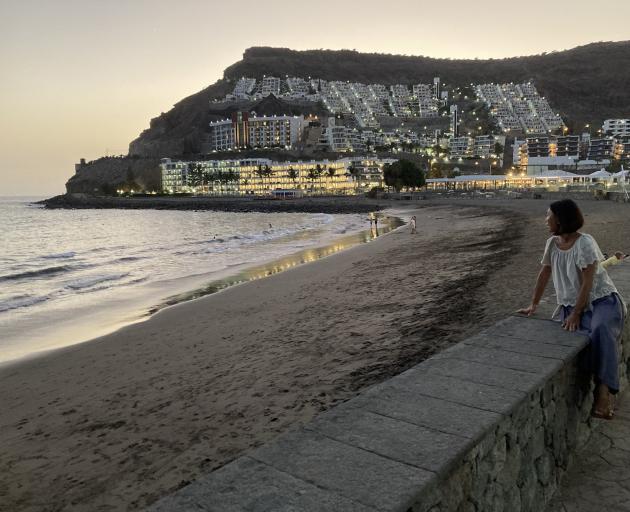
So going to Playa del Cura turned out to be a masterstroke. We heard a great mix of languages during our week at the Riviera Vista. Mostly Spanish, but also German, French, Norwegian and more. The hotel staff, all Spanish, were warm and welcoming and I doubt we could have made a better choice.
Elevator to the beach
One image I’d seen in the EasyJet holidays sales pitch showed the Riviera Vista hotel having a lift down to the beach. On the inland side of the coastal road and high above the beach on the side of sloping cliffs, the hotel features a horizontal bridge out over the road to a vertical concrete tower that houses the lift. On your first look, as a Kiwi, it seems quite surreal. Imagine telling the Department of Conservation that you’d like such an eyesore to connect your hotel to the beach in Aotearoa. Good luck on that! But not a problem on Gran Canaria, which is more reliant on tourism income than we are. Anyway, we grew quite accustomed to walking out over the bridge and taking the lift to the beach.
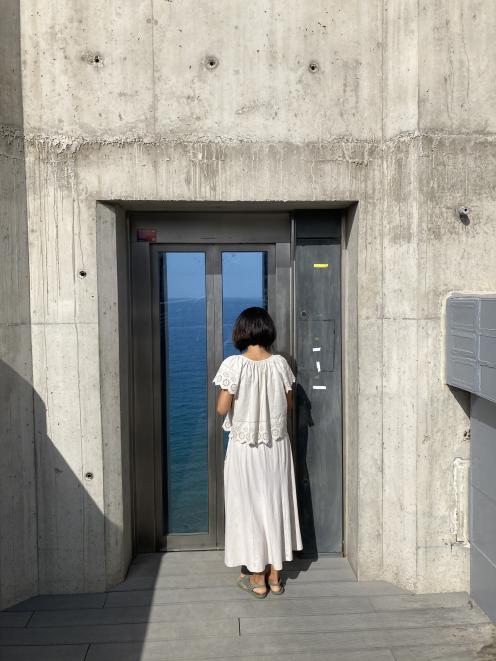
It took a while to get accustomed to some of the sights at the beach though. Obesity is obviously a problem in Spain, as it is in Aotearoa. I couldn’t get used to the sight of extremely large middle-aged and older Spanish women topless, wandering down the beach, chatting. Within two or three minutes of arriving on the sand from our lift on our first day, a very large topless Spanish woman was striding up and down, parallel to the shore, in knee-deep water, conducting a boomingly loud conversation in Spanish on her mobile phone. Despite finding the sight totally mesmerising, after a few minutes I tried to stop staring, not out of any sense of embarrassment, but to avoid getting motion sickness from the swaying.
While Playa del Cura could hardly be described as a gorgeous white-sand beach, it certainly did the business as we played around in the Atlantic Ocean daily. Temperatures were in the high 20s each day, while trade winds keep everyone cool and happy.
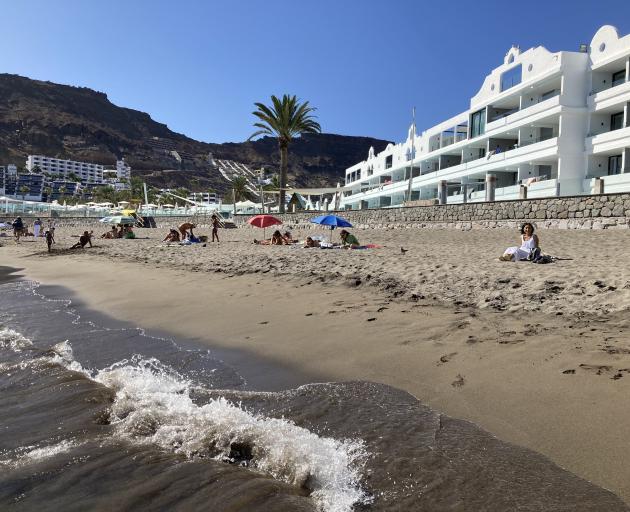
"Wasn’t expecting to see that!" I said to the blonde owner, who was preparing to open up for the day. "An Irish bar in Playa del Cura!"
"There are Irish bars everywhere," she replied. "If you went to the moon, you’d find an Irish bar!"
"You’ve used that joke before, haven’t you?" I shot back. She just smiled.
Riding the Guaguas
Of course, being a travel writer, I wanted to explore the island. "Ride the Guagua, the local bus," said the helpful guy at reception. "It’s easy. Just hop on the bus, tell the driver your destination and pay by card payWave."
There was a Guagua stop about 200m down the road and during the week we were on Gran Canaria, we made three day trips to different parts of the island. Knowing how difficult it is for tourists to understand and use the Orbus Public Bus Service in Queenstown, it was an absolute breeze to just jump on a Guagua and simply wave a credit card.
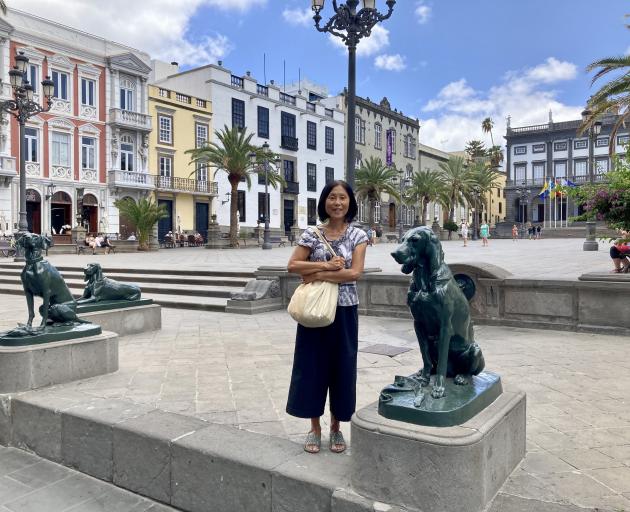
On the Saturday, we rode a Guagua east to nearby Puerto Rico, our local town, only 10 minutes away. Like Puerto de Mogán, it was also a tourist spot. I thought I recognised a Scottish accent. A roar went up from a nearby bar with a sign out front stating "Puerto Rico’s Top Celtics Supporter’s Bar".
On the Monday, we took a Guagua halfway around the island to Las Palmas de Gran Canaria, the largest city in the Canary Islands and ninth-largest in Spain, population 380,000. We rode Line 91 Directo, an express Guagua direct to Las Palmas GC, as it is known. The 65km journey took about one hour and 20 minutes. The east coast of the island, around the airport, must get really windy, as we saw the highest concentration of wind turbines I’ve ever seen anywhere.
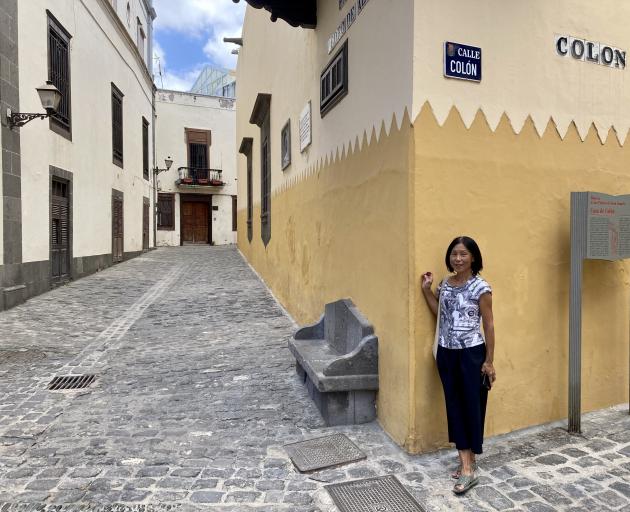
We loved our stay in Playa del Cura, but decided that a week was enough. The delicious buffet was just oh too tempting, waistlines were in danger of expansion, and according to Yuriko, I was almost out of control. There was only one disappointing aspect to our visit ... after a week on the island, we never did spot a yellow canary!
— Craig McLachlan is a Queenstown-based travel writer, who has worked for Lonely Planet for more than two decades.

